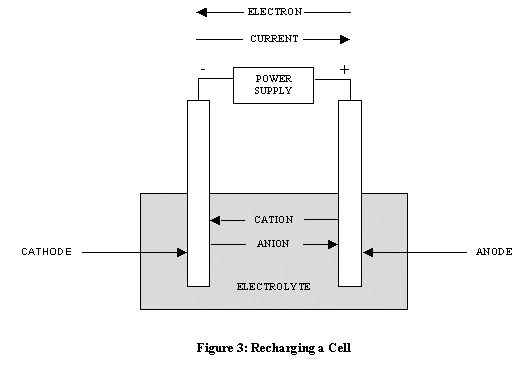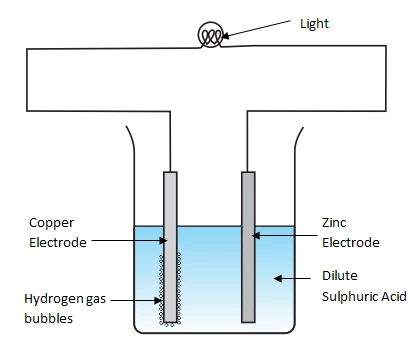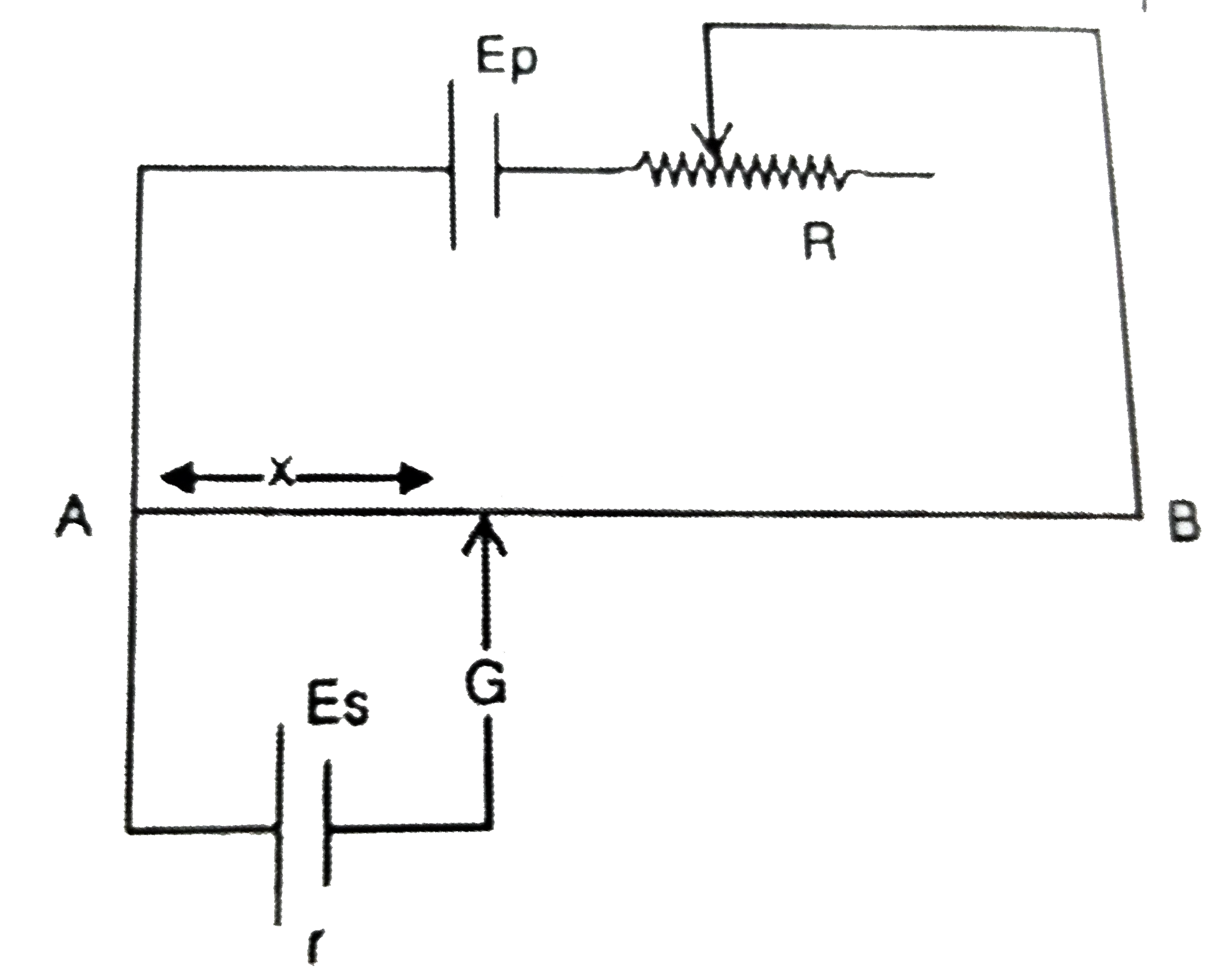Primary Cells
Primary Cells
What is a Primary Cell?
A primary cell or battery cannot easily be recharged after single usgae, and are discarded following discharge. Most primary cells use electrolytes that are contained inside absorbent material or a separator (for example no free or fluid electrolyte), and are thus named dry cells.
Primary batteries are single-use batteries because they can't be recharged again . A typical primary battery is the dry cell. The dry cell is a zinc-carbon battery. The zinc can serves as both as a compartment and the negative anode. The positive anode is a terminal rod made of carbon that is covered by a paste of manganese(IV) oxide, ammonium chloride, zinc chloride, carbon powder, and a little amount of water.
What is a Secondary Cell?
A secondary cell or battery can be electrically recharged after use to their initial pre-discharge condition, by passing flow through the circuit the opposite way to the flow during discharge.

Secondary batteries fall into two sub-categories relying upon their planned applications.
• Cells that are used as energy storage devices, conveying energy on request. Such cells are commonly associated with primary power sources so as to be completely recharged on request. Examples of these kind of secondary cells incorporate airplane systems and stationary energy storage systems for load-leveling.
Cells that are primarily used as primary cells, yet are recharged after use instead of being discarded. Examples of these types of secondary cells fundamentally incorporate portable consumer electronics and electric vehicles.
Zinc-acid Cell
The graph underneath illustrates a zinc-acid cell also known as the simple cell. It consists of:
(a) Zinc as the negative anode,
(b) Copper as the positive anode, and
(c) Sulphuric acid (dil.) as the electrolyte.

The chemical reaction that takes place among zinc and sulphuric acid is:
• Zinc + Sulphuric acid à Zinc sulfate + Hydrogen + Electric energy.
• The hydrogen gas collects in bubbles around the copper elec¬trode. The e.m.f. of this cell is 1.5V. This cell has numerous defects and for these, it not reasonably delivered economically.
Related Videos:
- Secondary Cell
- Differentiate between primary and secondary cells
- What type of battery is dry cell ? Write overall reaction occurring in dry cell
Primary Battery: The Leclanche Dry Cell
A dry cell or a simple torch battery is constructed with a zinc covering that serves as the anode; a graphite bar which acts as the cathode; and a damp mixture of zinc chloride {ZnCl2} and ammonium
chloride {NH4Cl}, and manganese dioxide {MnO2}. A schematic depiction of a dry cell is below.

The half-reaction that takes place on the anode when the battery delivers current is the oxidation of zinc atoms:
Zn(s, shell)  Zn2+(aq) + 2e–
Zn2+(aq) + 2e–
The half-reaction that takes place at the same time on the cathode is the reduction of ammonium ions:
2 e– + 2 NH4+(aq, damp paste)  2 NH3(g) + H2(g)
2 NH3(g) + H2(g)
A porous graphite terminal is inserted in the damp paste and promptly conducts electrons from the outer circuit to the aqueous ammonium ions. Look again at the products of the reduction that occurs at the graphitic cathode. Two gases are being delivered in a sealed compartment! Not to fear, our battery won't detonate as extra reactions primarily fix the two gases:
2 NH3(g) + Zn+2 (aq)  [Zn(NH3)2]2+(aq)
[Zn(NH3)2]2+(aq)
In this reaction, zinc ion, principally from ZnCl2, is behaving as a Lewis acid; the complex formed solubilizes the gas.
Comparison between Primary Cell and Secondary Cell
Primary
Secondary
- Lower introductory cost.
- Higher life-cycle cost ($/kWh).
- Disposable.
- Disposable.
- Substitution promptly accessible.
- Regularly lighter and smaller; thus generally progressively suited for portable applications.
- Longer service per charge and good charge maintenance.
- Not ideally suited for overwhelming burden/high discharge rate performance.
- Not ideally suited for load-leveling, crisis reinforcement, half and half battery, and significant expense military applications.
- Customarily constrained to certain applications.
- Higher introductory cost.
- Lower life-cycle cost ($/kWh) if charging in advantageous and inexpensive.
- Ordinary maintenance required.
- Intermittent recharging required.
- Replacements while accessible, are not created in the same sheer numbers as primary batteries. May should be pre-requested.
- Customarily less suited for portable applications, albeit ongoing advances in Lithium battery innovation have lead to the improvement of smaller/lighter secondary batteries.
- Comparative with primary battery systems, conventional secondary batteries (especially aqueous secondary batteries) display substandard charge maintenance.
- Superior high discharge rate performance at substantial loads
- Ideally suited for load-leveling, crisis reinforcement, half breed battery and significant expense military applications
- The general inalienable versatility of secondary battery systems allows its use and proceeding with research for a huge spectrum of applications
Important Chapters:
A secondary cell or battery can be electrically recharged after use to their initial pre-discharge condition, by passing flow through the circuit the opposite way to the flow during discharge.


chloride {NH4Cl}, and manganese dioxide {MnO2}. A schematic depiction of a dry cell is below.

Primary
Secondary
- Lower introductory cost.
- Higher life-cycle cost ($/kWh).
- Disposable.
- Disposable.
- Substitution promptly accessible.
- Regularly lighter and smaller; thus generally progressively suited for portable applications.
- Longer service per charge and good charge maintenance.
- Not ideally suited for overwhelming burden/high discharge rate performance.
- Not ideally suited for load-leveling, crisis reinforcement, half and half battery, and significant expense military applications.
- Customarily constrained to certain applications.
- Higher introductory cost.
- Lower life-cycle cost ($/kWh) if charging in advantageous and inexpensive.
- Ordinary maintenance required.
- Intermittent recharging required.
- Replacements while accessible, are not created in the same sheer numbers as primary batteries. May should be pre-requested.
- Customarily less suited for portable applications, albeit ongoing advances in Lithium battery innovation have lead to the improvement of smaller/lighter secondary batteries.
- Comparative with primary battery systems, conventional secondary batteries (especially aqueous secondary batteries) display substandard charge maintenance.
- Superior high discharge rate performance at substantial loads
- Ideally suited for load-leveling, crisis reinforcement, half breed battery and significant expense military applications
- The general inalienable versatility of secondary battery systems allows its use and proceeding with research for a huge spectrum of applications
Similar Questions
Primary cell is a rechargeable cell .
View SolutionConsider a potentiometer circuit, Primary cell is ideal. The length of potentiometer wire is 1 m and the resistance per unit length of potentiometer wire varies with length as λ=2xΩ/m. Where x is distace from end A. Resistance of Rheostat varies with time as R=I2Ω Null deflection point for secondary cell is obataied at x=12 m and at t=1 sec. If emf of secondary cell is 1γ times of emf of primary cell, find γ.
 View Solution
View Solution
Knowledge Check
- Question 1 - Select One
Primary cell wall formed by :-
AIntussusceptionBAppositionCIntussusception & lignificationDMineralization - Question 2 - Select One
Assertion Primary cell wall is permeable whereas secondary cell wall is impermeable
Reason Primary cell wall is made up of cellulose whereas secondary cell wall is made up of ligninAIf both Assertion and Reason are true and the Reason is a correct expanation of the AssertionBIf both Assertion and Reason re true but Reason is not a correct eplanatin of the AssertionCIf Assertion is true but the Reason is falseDIf both Assertion and Reason are false - Question 3 - Select One
Choose the correct statements with respect to cell wall
A. Precursor of cell plate is middle lamellum
B. Primary cell wall is outer most layer of cell wall
C. Materials of primary cell wall holds the cells together
D. Middle lamellum is mainly composed of calcium pectate
E. Cell wall and middle lamellae may be traversed by plasmodesmata
F. Secondary wall is formed outside the primary wall in all the casesAA,B,C,DBD,ECB,C,DDE alone
Column−IColumn−II(A)Cathode(p)Primary cell(B)1Coulomb(q)Secondary cell(C)Dry cell(r)6.24×1018electrons(D)Lead stron cell(s)Concentration cell(E)Zn∣∣Zn2+(0.10M)∣∣∣∣Zn2+(0.1M)∣∣Zn(u)Positive terminal of electrochemical cell
View SolutionConsider the following statements
(1) In plant cells, cytokinesis starts with the formation of phragmoplasts
(2) Phragmoplast comprises interzonal microtubules and Golgian vesicles
(3) Primary cell wall is produced by microtubules
(4) Phragmoplasts are formed from the nucleusView SolutionRead the statement carefully and choose the correct option.
A. Primary cell wall of plant cells is incapable of growth and diminishes gradually as the cell matures.
B. RER is abundantly found in the cells which are actively involved in proteins synthesis and secretion.
C. SER is a major site for lipid synthesis.
D. A number of proteins synthesized by RER are modified inside the Golgi apparatus.View SolutionThe primary cell is a
View SolutionThe primary cell wall is composed of
View Solution

